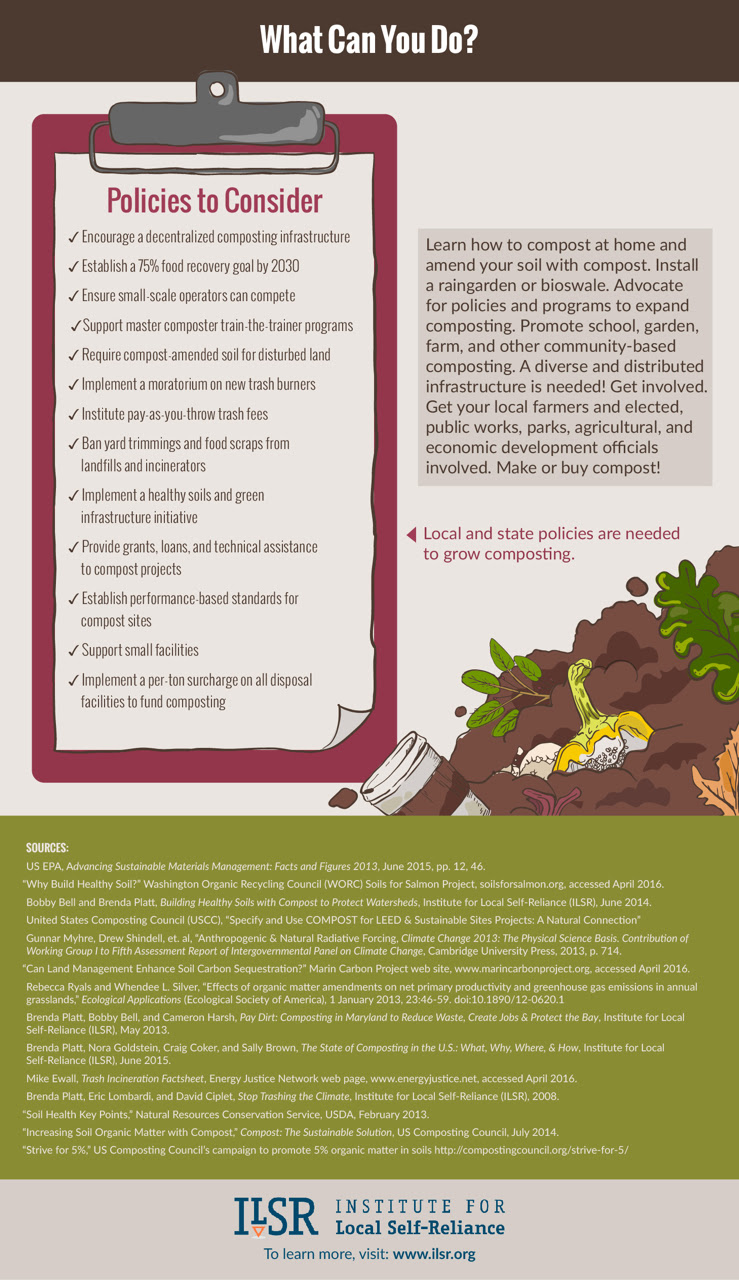It is International Compost Awareness Week and the Institute for Local Self-Reliance has been releasing infographics every day to illustrate the many ways compost goes much deeper than dirt!
(The following comes from the Institute for Local Self-Reliance (www.ilsr.org), a national nonprofit organization working to strengthen local economies, and redirect waste into local recycling, composting, and reuse industries. It is reprinted here with permission.)

Composting is the aerobic decomposition of organic materials by microorganisms. It transforms raw materials—such as leaves, grass clippings, garden trimmings, food scraps, animal manure, and agricultural residues—into compost, a valuable earthy-smelling soil conditioner, teeming with life.
Action is needed to grow composting. Composting can be small scale, large scale and everything in between. To support composting, we need to promote a diverse and distributed infrastructure, from backyards and school gardens to farms, commercial and municipal sites. You can help. Start composting and demand better policies.
Composting is great for the economy as well. On a per-ton basis, making compost alone, employs two times more workers than landfills and four times more than incinerators. Using compost in green infrastructure (such as raingardens, bioswales, compost blankets, and vegetated walls) creates even more jobs: five times more workers than landfills and 10 times more workers than incinerators! Not only is composting better for the environment than landfills and incinerators, it provides more employment opportunities.
Food scraps in landfills generate methane, a greenhouse gas with a global warming potential 84 times more potent than carbon dioxide in the short term. But when converted into compost and applied to the land, compost sequesters carbon. Compost also enhances soil fertility and health. It helps prevent soil erosion and increases the ability of soil to hold water.